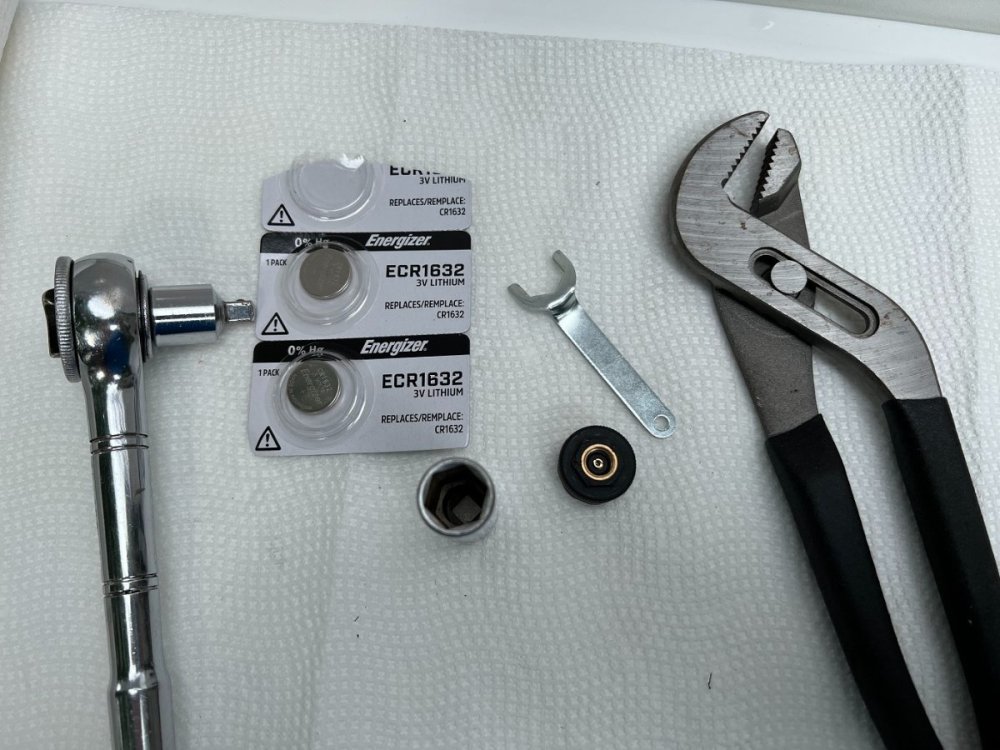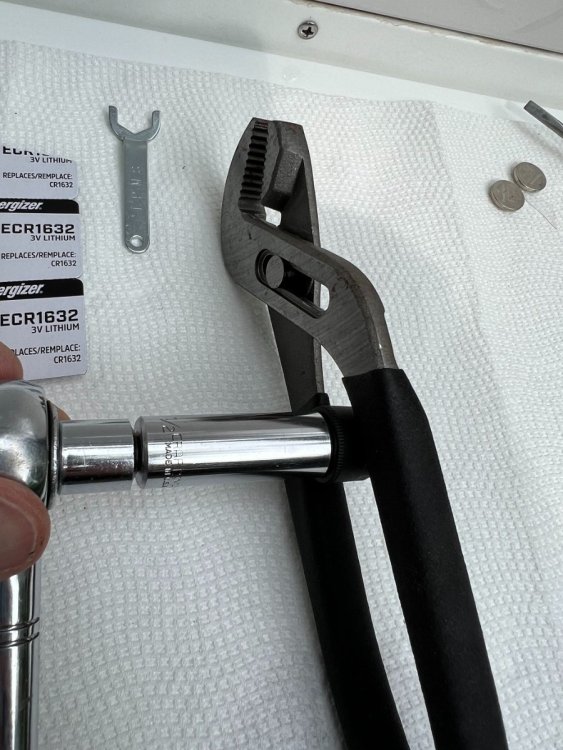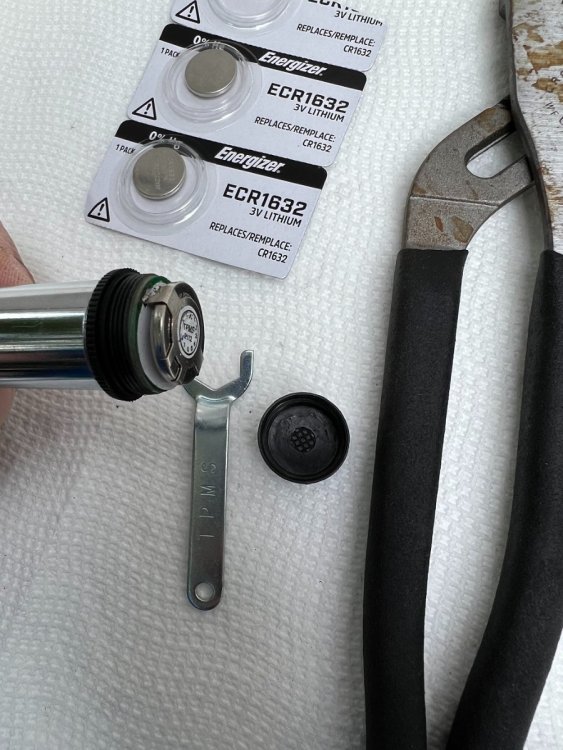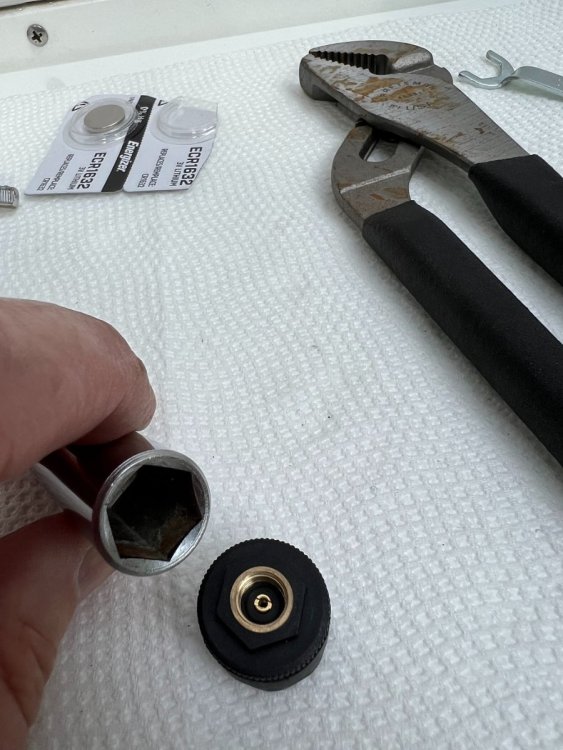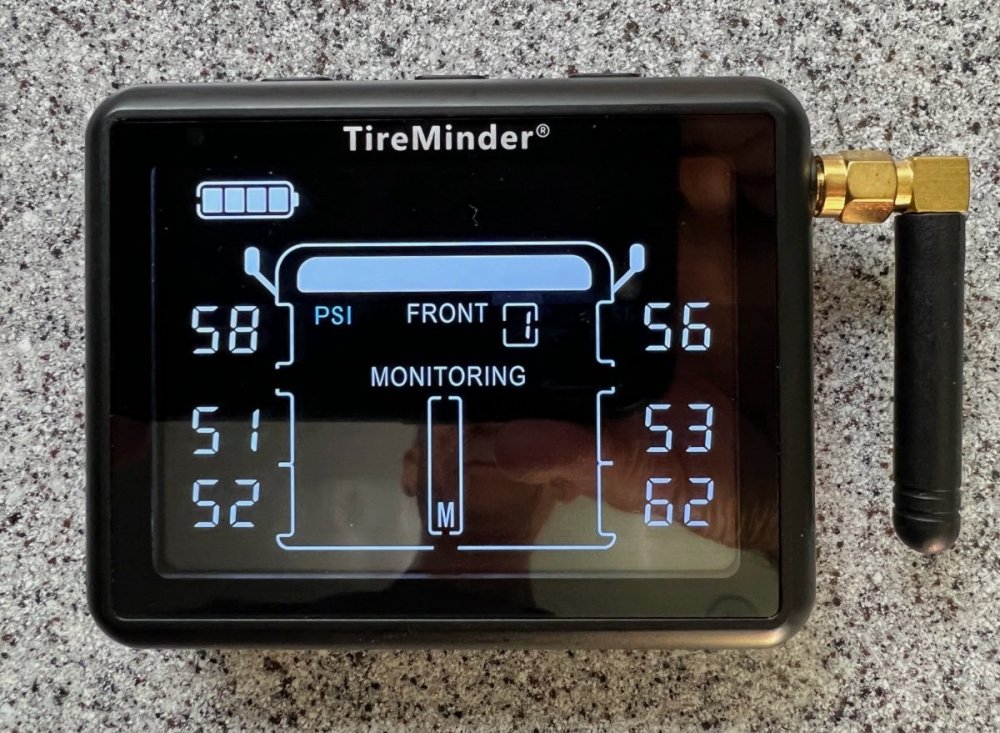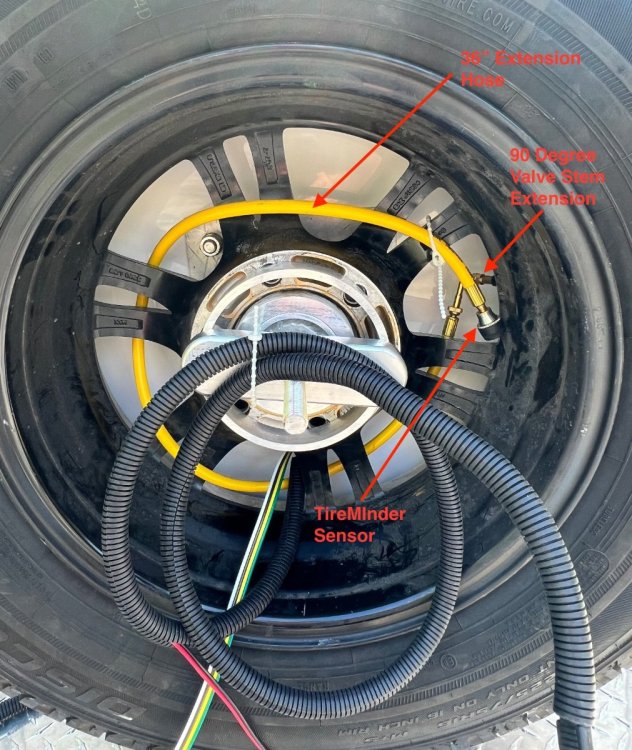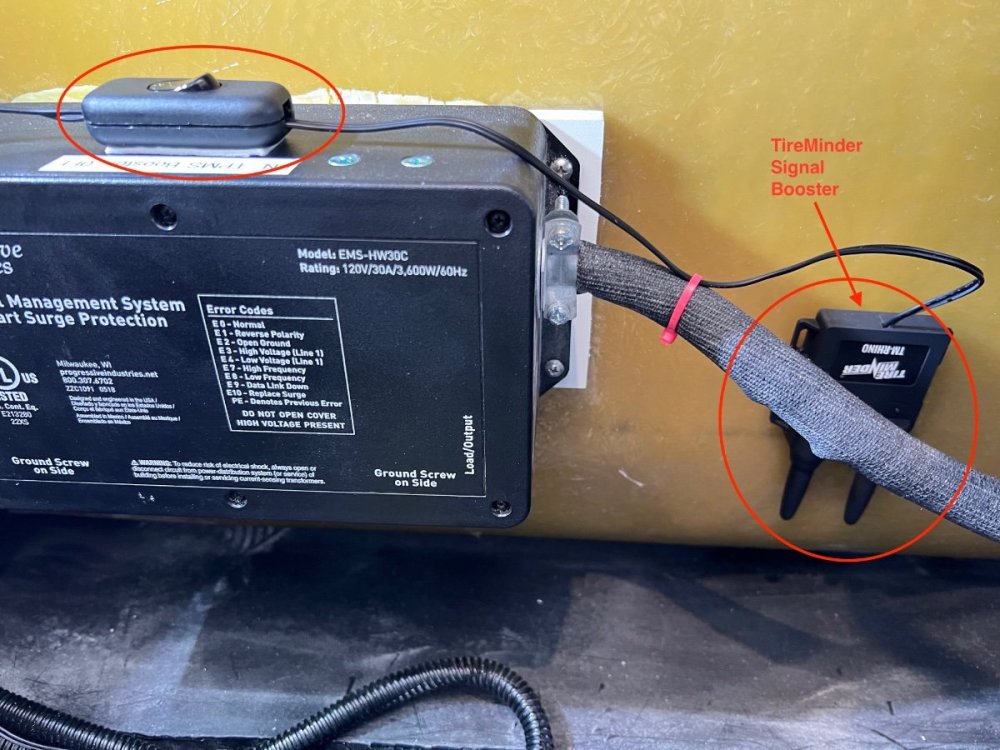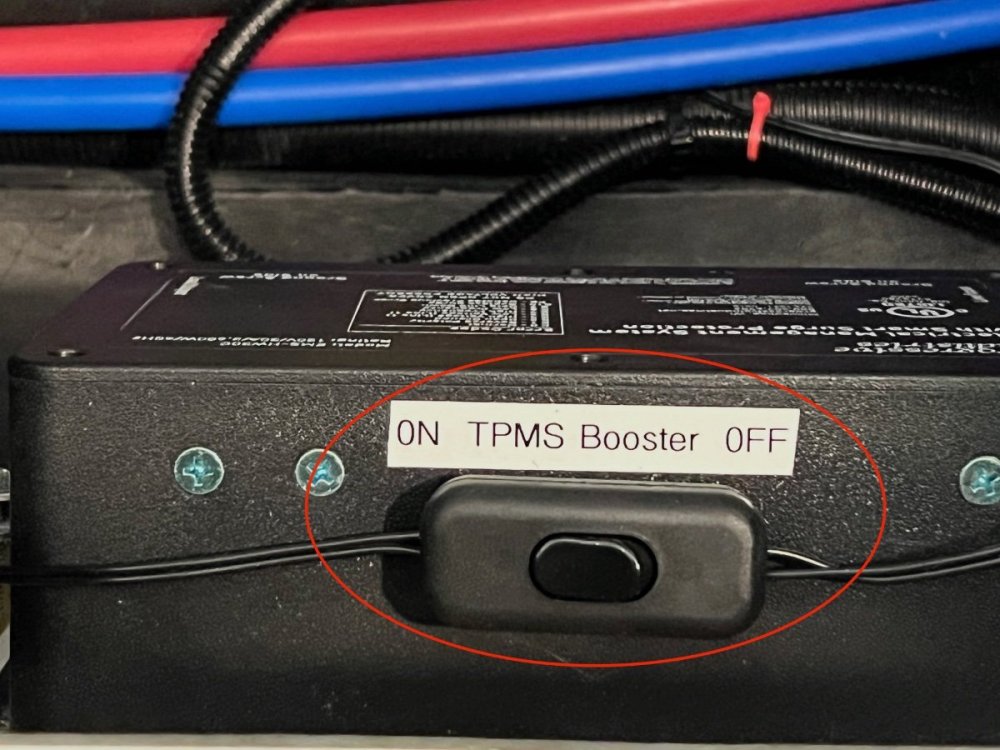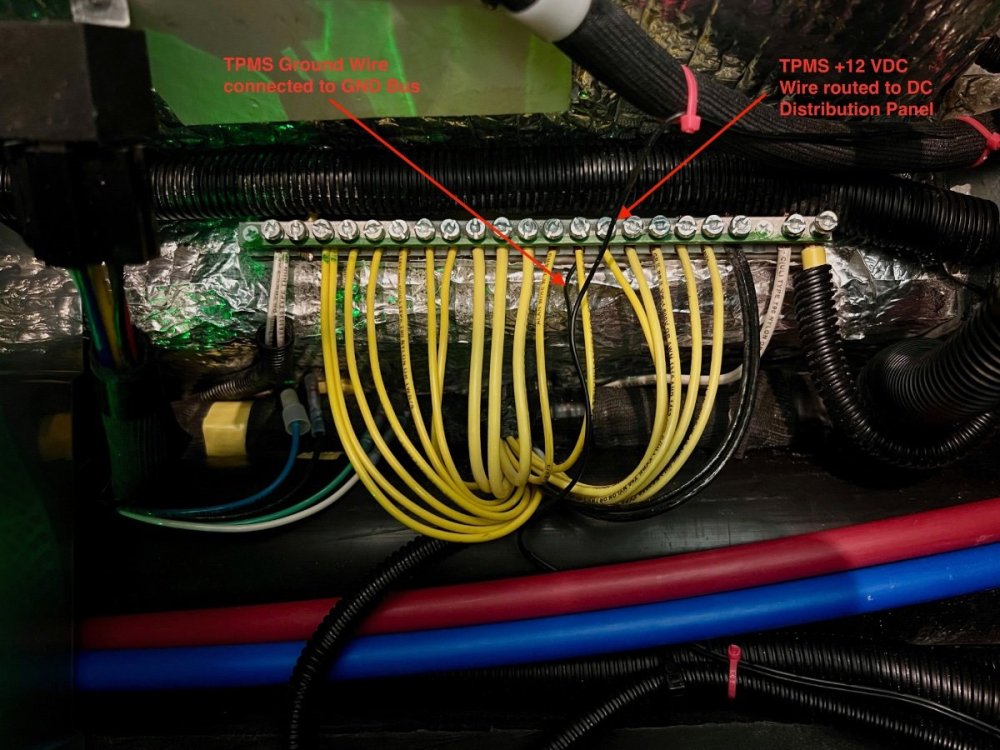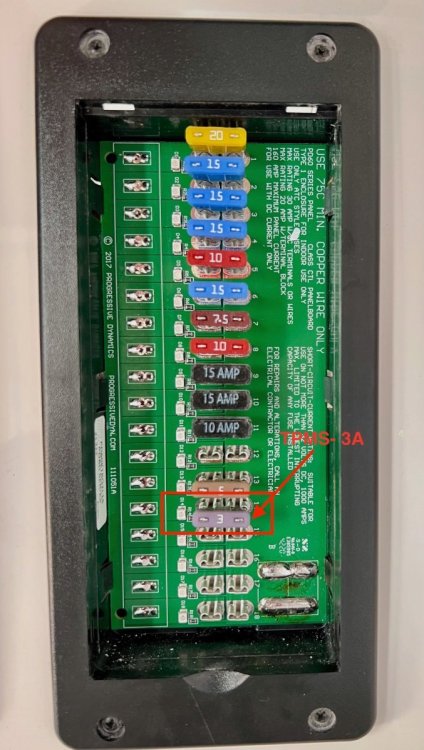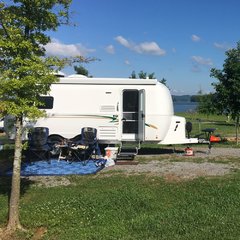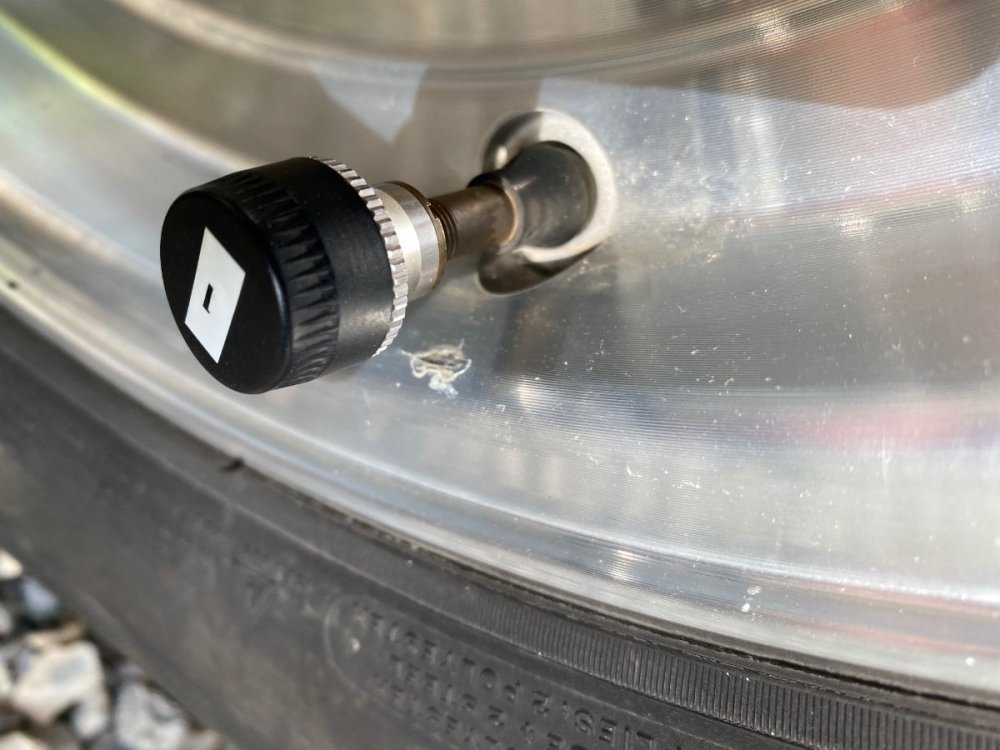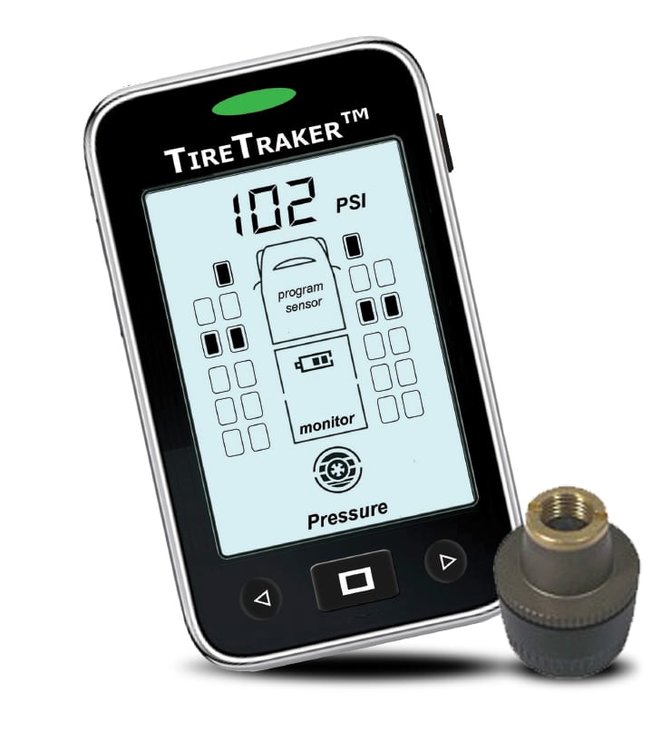Search the Community
Showing results for 'tpms'.
-
I thought that I'd post this in case anyone else runs into the situation that I did whereby the TPM sensor battery compartment was unable to be removed with the supplied stamped sheet metal wrench. In my case the battery compartment was so stuck on that the supplied wrench began rounding off the plastic hex nut profile of the sensor, had I gone any further the sensor would have been ruined. I ended up using a 1/2 inch six-sided socket that provided much more surface area contact than the wrench and the socket did not mar the surface of the plastic nut; even doing that I was unable to grasp the barrel end of the sensor with enough force using my hand to unscrew the barrel from the sensor until I squeezed the barrel between the padded hand grips of my channel-lock pliers ( don't use the jaw end or you'll risk crushing the barrel ). Curiously ProSmart used to ship a tool that more accurately fit the profile of the sensor but have included only the stamped sheet metal wrench in the current kits which provides significantly less surface area contact leading to the possibility of destroying the plastic nut profile. Also, when replacing tires I'd recommend changing the tire stems to metal versions rather than rubber to prevent premature failure of the stem as a result of the added weight of the TPM sensors.
-
Shortly after arriving home from our delivery trip to Hohenwald, I installed a TireMinder i10 Tire Pressure Management System (TPMS), with six sensors, a monitor and a signal booster (installed later). Four of the sensors were fitted to the valve stems of the four trailer wheels on the ground, one on the trailer spare and one to the tow vehicle spare. The sensors transmit tire pressure and tire temperature status continuously to the small monitor in the tow vehicle. The 433 MHz RF signal booster is to ensure the signals from the sensors reach the monitor. The TPMS is quite configurable and can support up to 10 sensors simultaneously. Thresholds can be user specified and the system is preconfigured to create alerts for slow leaks or catastrophic loss of tire pressure. I first mounted the sensors to all the six wheels. The sensors appeared to have no problem communicating with the monitor in the tow vehicle. I deferred about a month installing the signal booster. Mounting the sensors is quite straightforward, requiring only insertion of provided disc batteries to the sensors, then screwing the sensors onto the valve stems. I like the inclusion of a lock nut to secure the sensors to the valve stems, using a provided small wrench. TireMinder Air Pressure & Temperature Sensor TireMinder i10 Monitor On each spare wheel I added 36" long extension hoses ($11 each) and 90 degree valve stem extensions ($7/pair), based on a recommendation from @John E Davies. The TireMinder sensors are mounted to the end of the extension hoses, which are routed through the wheel spokes to the accessible side of the spares. The valve stem extensions allow the hoses to be attached to the valve stems with no danger of kinking. These accessories eliminate a huge PITA- both spares are stored with their valve stems inaccessible. The trailer spare mounts with the valve stem facing the rear wall of the trailer. The tow vehicle spare is stowed valve stem down in a well under the cargo area at the rear of the vehicle. Now the TPMS reports the tire pressure with no hassle. Even if the spares require addition of air, the access is easy, without removing the spares from their storage positions. I always intended to install the signal booster, but had not settled on the best location. The installation instructions recommend locating the signal booster on the undercarriage, toward the front of travel trailers, with the antennas pointed toward the ground. The signal booster requires 12 volts DC for operation. I searched the OTTO forum seeking information on locations chosen by Oliver LEII owners for mounting such signal boosters. I found references to mounting signal boosters within the doghouse or in one of the upper storage compartments, neither of which appeared to offer ease of connection to a 12 VDC supply. Other owners indicated they had not installed the signal booster, since the monitor seemed to reliably provide tire pressure and temperature information. While vacuuming fiberglass dust from all areas accessible under the interior access hatches, I found what appeared to be an ideal location for the TPMS signal booster. The hatch under the rear dinette seat is the location of the Progressive Industries Surge Protector, mounted to the wall on the aisle side of the compartment. Adjacent to that location is a large area of unobstructed wall. Just below the surge protector is a ground bus and on the forward wall is the rear of the DC distribution panel. I believe this is a very desirable location for the signal booster. It is located low, slightly forward of the axles, in a protected space near the needed power supply. TPMS Signal Booster Location The TireMinder Signal Booster is attached to the fiberglass wall using an Industrial Velcro Coin, which enables easy removal. TPMS 12 VDC Power Switch I chose the top of the Progress Industries Surge Protector to mount a switch to turn the 12 VDC power supply to the TireMinder Signal Booster ON/OFF. The signal booster has a green light to indicate the power is ON. The wires from the signal booster are very thin and are both black (despite the instruction manual indicating one to be red and the other black). I don't believe it matters which is +12 VDC and which is Ground (GND). I routed the wires along cables in the compartment. The pink zip ties appearing in the photos provide clues to the routing. I arbitrarily selected a position on the Ground Bus to mount one of the wires to be Ground. The other wire was routed to the rear of the DC Distribution Panel, mounted on the forward wall of the compartment. Fuse position 14 was unused, so I selected it and connected the second wire from the TireMinder Signal Booster, using a crimp-on connector. Finally, I inserted a 3 amp fuse to the front side of the DC Distribution Panel, position 14. DC Ground Bus DC Distribution Panel (Rear) DC Distribution Panel (Front) Summary Although I had encountered no problems with the communication between the tire pressure/temperature sensors and the TireMinder Monitor, I believe having the signal booster installed reduces the risk of loss of communication between the sensors and the monitor. I have been leaving the signal booster on while traveling and turning power OFF when in storage. The signal booster draws only 75mA (Transmitting) to 14mA (Inactive). I tested the range with the signal booster installed and powered ON. I was able to walk over 300 feet from the trailer with the monitor receiving signals. I have been impressed with the TireMinder TPMS system. I have not mounted the monitor in the tow vehicle, but keep it on the center console, where I can view it as desired, and also hear any alarms which may occur. I purchased the TireMinder i10 and six sensors from TechnoRV (https://www.technorv.com/) for $279.65 (no shipping and no sales tax).
- 5 replies
-
- 10
-

-

-
Greetings! I need to remove the TPMS transmitters to inflate the tires but I can't get them off. The little wrench they supplied does not do the trick. Any other suggestions? Carl
-
I just installed the TireMinder i10 on my 2022 Oliver which was straightforward enough; however now two of four tires have leaking (stuck) stem valves! I managed to screw all the transmitters on so the leaks are stopped and the tire pressure is at the planned 55 psi. Questions: Is this a common problem/result of installing this product? I assume I need to install (learn how to) some new valve stems and not some how fix? Any recommendations on brand or model for new stems? Install method advise? I have Cooper Tires "Discover HT3" tires as equipped by the factory. Thanks for any advise.
-
A friend with 2021 Ford f150 is ordering an Elite. Can anyone tell me if Ford supplied tpms and backup camera is available to work woth Ford screen?
-
Part of Annual Maintenance is to Check Tire PSI. We have TPMS on our tires. At last year's Maintenance service, per the invoice the PSI was not checked due to our TPMS. The TPMS keeps track of PSI. We can remove the TPMS upon arrival at the service center. If you remove your TPMS, how do you keep track of each sensor to its tire. What do people do? I know many have TPMS. I would like Oliver to be able to check the PSI as we believe one tire may be low. Maybe I am being overly concerned about something of little consequence. ty
-
I have the TireTraker TPMS with the external sensors that thread onto the valve stem in place of the normal valve caps. While doing my spring cleaning on the Ollie, I noticed that all 4 aluminum rims have a wear mark on the rim directly adjacent to the valve stem (see picture). In researching this a bit, I found some comments on other forums about the weight of the external TPMS sensor causing the valve stem to deflect when the tire is rotating at highway speeds, and in some cases even causing the valve stem to fail. Anyone else observed this? Has anyone ever experienced a rubber valve stem failure while using the external sensors?
-
In looking at TPMS for the trailer that we are getting in November, I like the TST 507 tpms. It gives both tire pressure and temperature of the trailer tires and an audible warning when limits are exceeded. My vehicle has a tpms which lights up when the pressure is low. I like the idea of monitoring all tires (8) on truck and trailer. Is that overkill? Do you all just monitor the trailer and rely on the vehicle system for pressure only? Thanks in advance for your suggestions.
-
“HOW OFTEN IS A SENSOR TRANSMITTING INFORMATION? This varies among manufacturers, but generally, sensors have different settings while parked and while in motion. The better question is what causes the sensor to transmit? When a sudden change in pressure is detected, the sensor should transmit whether the sensor is stationary or moving. When the tire starts to roll, tiny accelerometers cause the sensor to wake up and start broadcasting at regular intervals. In rolling mode, sensors transmit, on average, once every 30-120 seconds. While parked or in stationary mode, depending on the manufacturer, sensors may transmit only when a significant pressure change is detected. If a TPMS sensor transmitted all the time, a sensor would not last very long. Most TPMS sensors will transmit when movement is detected through a simple accelerometer inside. If the wheel stops moving, the sensor will stop broadcasting after a programmed amount of time. But once it is triggered, the sensor transmits on a predetermined interval set by the manufacturer. A sensor will immediately send a signal if it detects a sudden loss in pressure.” https://www.underhoodservice.com/tpms-radio-frequency-theory-and-operation/ Mine has screw on sensors, and when getting ready to leave in the morning I “wake up” each one with a couple of raps from my finger so they transmit today’s value, not the one from when I arrived, in case one of the tires picked up a nail and was quietly deflating overnight. I would much prefer to see that warning or low pressure reading in the campground than a couple of miles down a busy highway… and this is a great reason to NOT choose a type that installs inside the tire. You can’t wake those up except by driving away. John Davies Spokane WA
- 1 reply
-
- 4
-

-
I had a unique opportunity on a recent trip we took while towing our Ollie down to the Chesapeake Bay for a little vacation. Actually observed a trailer tire failure in real time. Driving in moderately heavy traffic on an interstate at 60-65 mph, we were a bit behind a pickup truck towing an SOB dual axle travel trailer. It was a section of the interstate with 3 lanes in each direction. I was in the far right lane as usual, and the pickup truck/TT ahead of us were in the center lane. My wife and I both noticed that the forward tire on passenger side of the trailer ahead of us was low and the sidewall of the tire was oscillating side to side noticeably. Our position to the rear and right of the other trailer gave us a great viewpoint. The oscillations were getting worse, but the pickup truck driver was showing no indication he noticed anything at all as he happily maintained his speed. I tried to speed up an little to get alongside to try to honk/wave to warn him, but traffic opened up a bit at that point and he actually sped up significantly, so I fell pretty far behind. At this point, small chunks of rubber were now being thrown off the tire, but the driver continued on at speed. I gave up on my attempt to get alongside to warn him since I didn't feel safe getting closer, and actually backed off a bit further. Within another 30 seconds larger chunks of tire started coming off, followed by pieces of aluminum siding from the trailer side wall around the wheel well as the entire tread started coming off the tire and whipping around in the wheel well. So I slowed down even more to get a very safe distance behind from the impending disaster. Incredibly, the driver was still maintaining his speed! Probably doing 70mph and in the middle lane of three lanes of traffic! The full tire tread soon came off, fortunately I was far enough behind to avoid it easily along with all the other debris laying in the road at this point. By now other drivers closer to him in traffic were honking & waving at him, and he probably felt some drag or vibration at this point, and he finally figured out something was wrong, but because he was in the middle lane of the three lanes, and with the traffic, it took him quite a bit of distance to finally get over to the far right lane and he exited at an off ramp and pulled off on the shoulder there. By that point the tire was completely gone, but fortunately since it was a dual axle trailer, the driver never lost control. Some lessons learned, and/or reinforced. A very strong reminder of the need for a good TPMS system (I've had one since day one with our Ollie Elite II). A great demonstration of the advantage of a dual axle trailer for stability. And also a reminder that keeping to a reasonable speed and staying in the right hand lane most of the time are good practice.
-
I started this as a PM to GeronimoJohn and it got so wordy, I decided to post it here. I researched these systems a long time and decided on the Tire Traker. They have stellar customer service and are sometimes at (really) big RV shows and places like Quartzite. The sensor batteries are to be replaced annually, but may last longer - they use cheap button cells. I bought a repeater in case the distance was too far but have NOT needed it. I suggest that you buy the four sensor set, an extra sensor for the spare tire, and the maintenance package. The only thing I did not like was that the trim on the perimeter of the display is bright and it reflected sunlight in the windshield. I painted the upper part on mine flat black. Some electrical tape would also work. The display is rechargeable and runs up to a month, and in sleep mode it wakes up when there is a signal from the wheel sensors. They too wake up when moving, to save the batteries. I try to remember to shut my display off every evening. The mount is a suction cup and very nice. There is no case for the display; I use a soft cloth drawstring bag from a set of sport goggles for storage. The system shows individual tire pressures and temperatures. There are preset alarm levels for both. If you get a slow leak, the alarm will come on at a reduced level to let you know that you need to pull over. By watching the display you can tell if it is slow or a big one. If it is a big leak the alarm is more intense. The sensor on the spare tire lets you know that it has not gone flat, since it is a small PITA to check. If one of the main sensors fails, you can swap the spare onto that wheel until you can get a replacement. Or just order an extra sensor now... The temperature display is useful since it shows the temps increasing as the tires heat up during towing, which is completely NORMAL, and if there is one that is abnormally warm, you can stop and see if there is a brake or bearing issue on the hub. NOTE: because the sensors are spinning in ambient air on the end of the valve stems, I doubt that the displayed temps are especially accurate. A sensor inside the wheel would be a much more reliable and accurate system. I honestly don't see how the external sensors could read inside temps, but they do to a certain degree (pun intended). I don't think that the display dims, I have never used it at night. I suspect you would want to take it off the windshield and just set it in a low cupholder. It would still alarm if needed. If somebody knows if the lighting dims, please comment. The system gets very good reviews, you can get from Amazon, but I ordered direct from Tire Traker. Setup: Charge the display several hours. After first checking and adjusting your COLD tire pressures (I use 60 psi), it will take you about ten minutes to set it up, there are many videos showing how. You have to set the alarm threshold (enter the cold tire pressure), install batteries into sensors and put them on the wheels one at a time. As each one "wakes up" it will show up on the display and you can adjust its position of the vehicle diagram, for example "left rear" on the trailer drawing. Position of the display: I mount mine at the lower left corner of the windshield. It is easy to see, but neither in my direct line of sight, nor close to my Garmin gps. Aftermarket devices like a gps that use radio signals may possibly cause interference. My RV 660 is mounted along the center of the windshield and I have noted no interference when using my Garmin remote (trailer backup) camera. If you have trouble with the TT-500 signal, you may need to mount their booster inside the trailer connected to an always-on power source. If you have the factory backup camera, the area behind the switch would be a great location, and you can use the switch to power on the booster when you switch on the camera. https://www.tiretraker.com/proddetail.php?prod=TT500-4 https://www.tiretraker.com/proddetail.php?prod=TT50 https://www.tiretraker.com/proddetail.php?prod=TT-MAINT Installation video: If you are driving an older tow vehicle without its own TPMS, you can order extra sensors and use the Tire Traker to monitor those tires also. This system is versatile and mine has been reliable for a year. It gives great peace of mind when towing, especially in inclement weather and in remote areas, which is priceless. Anything you can do to reduce your anxiety level while towing is a good thing. HIGHLY recommended! I towed trailers for 45 years without TPMS, and I am very glad I invested in this. John Davies Spokane WA
-
Just curious did a search in this forum to no avail. Anyone use a TPMS on their Olie? Thinking on the TST system, Thoughts? Pat
-
Anyone running with this one? I want a TPMS for pickup but like having and app versus another device on the dash as main source of info and warnings. Where and how have folks wired in the amplifier for signal? TIA
-
I'm wondering if any Oliver owners use a TPMS for monitoring all the tires while on the road?
-
John Davies suggested that I should start a new thread about my Tuson TPMS installation and attach some pictures. The first picture shows the Blue Sea bus bar, 4 fused circuits, that I installed under the dinette seat adjacent to the pantry. This is where the ground bar is located and as far as my power cable from the repeater reached. The repeater is installed under the dinette seat adjacent to the bathroom. Tuson says they want the repeater as far forward as possible and facing a certain direction too. I snaked the cable in the basement under dinette and there is a picture that shows where I installed it. In this picture, you can see the power cable that I ran to the Blue Sea bus bar. It is fused too. The two spares are still attached via a tie wrap and can be see right behind the transfer switch cable. You can see the smaller red power cable connected to the first circuit on the bus bar. If you look closely, you will see that I added a 4 position ground bar which tees with the original ground bar. I removed the screw that Oliver installed to hold the ground bar and replaced with one long enough to account for the thickness of the 4 position ground bar. The next picture shows the Oliver main 12 volt bus bar. The orientation is messed up, but left is down and right is up. This bus bar is located just beyond the fused breaker under the street side bed adjacent to the pantry. The power cable that supplies the bus bar I installed is connected over the positive battery cable that is fed from the fused breaker just visible to the right, but displayed on the bottom of this picture. The third picture is an additional picture of the fused power cable that I installed. Finally, the fourth picture shows the TPMS repeater and I snapped the picture upside down. It is attached with the peel and stick rubber backing. The wire adjacent to it is power for the LED courtesy light on the dinette seat wall adjacent to the aisle. I am not sure how important it is or not, but one of purported benefits of installing the repeater using the battery power is to get readings from the RV batteries while you drive. I am not sure how important that really is, but Tuson really wants me to have the repeater installed due to the overall length of the trailer. The repeater could be installed on the outside because it is waterproof. It only activates, like the TPMS transmitters inside the tires, when the trailer moves, so they are all powered off when the RV is sitting still after a period of time. The LED display is pretty old school, but the functionality seems good. The display can rotate between the tire pressure, tire temperature and battery reading or the preferred screen can be selected. It alarms for low and high pressure and high temperature. Low tire pressure will activate the TPMS sender too without the RV moving which I will test at some point. David Caswell
-
Wondering if any of you who have used the Tire Tracker TT-600 as a pressure monitoring system have found it necessary to use the signal booster? I seem to lose signal after an hour or two of driving for some reason....
-
Researching TV and trailer purchase. Ford has a rear view trailer camera that will sinc with its monitor inside the truck. It is a hard wire unit. I was thinking I could send the unit to Oliver and have them run the wires inside when they build the trailer. They said they could do this for an additional fee. Was wondering if anyone has done this? I understand the unit will only work while the truck is in reverse. Don't understand why that is, or if I like the idea. Seem like one might want to take a peak while go down the road. However, maybe not a big deal. I don't know if the camera that Oliver offers as an option works all the time. But it does require a separate monitor. I like the idea of only one screen but not the fact it only works in reverse. Does anyone have any thoughts on this? Also, Ford offers a TPMS unit that works with it's monitor. However, I read that the valves don't fit on all rims. Can you get adapters that will make the valve work? Or purchase another brand that fits the Oliver rim? But, will it work with the Ford software? Has anyone experienced this problem? Probably a question for Oliver service. Geeez, somethings are not easy. Maybe just a pocket tire gauge and one of those oval mirrors like the mail trucks have. Thanks for your thoughts!
-
TPMS-Are most of you using tire pressure monitoring systems? Anyone have good or bad comments about specific brands?
-
I am installing a TPMS Signal Booster in the Propane Tank compartment. Where should I attach the positive red wire and the negative ground wire? Should I incorporate a switch. Is there any documentation from Oliver for the junction box behind the rear jack controls?


